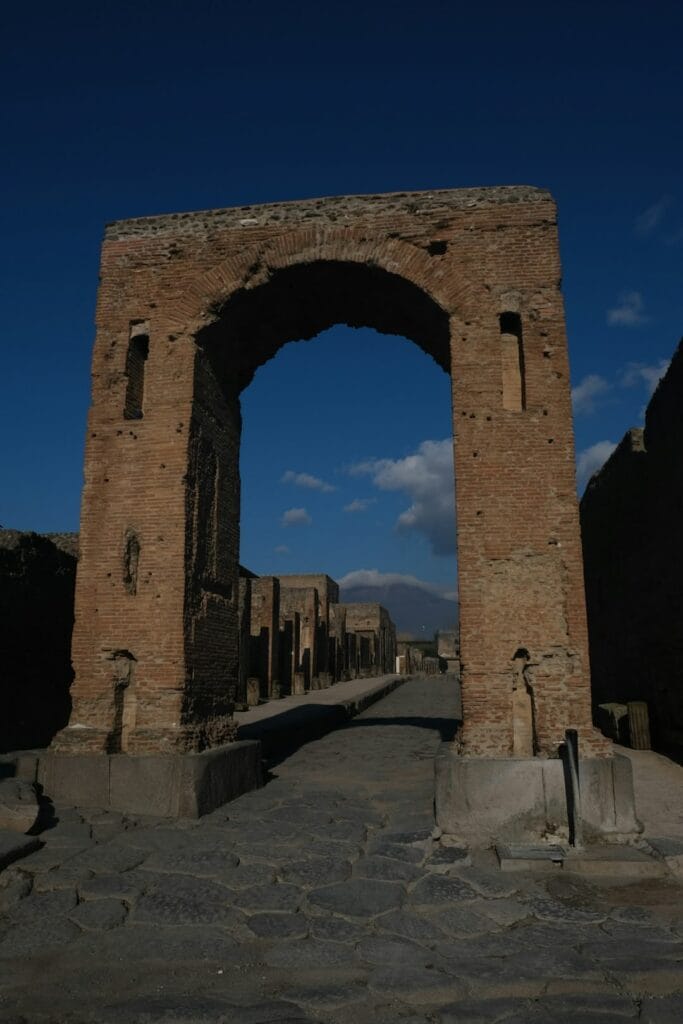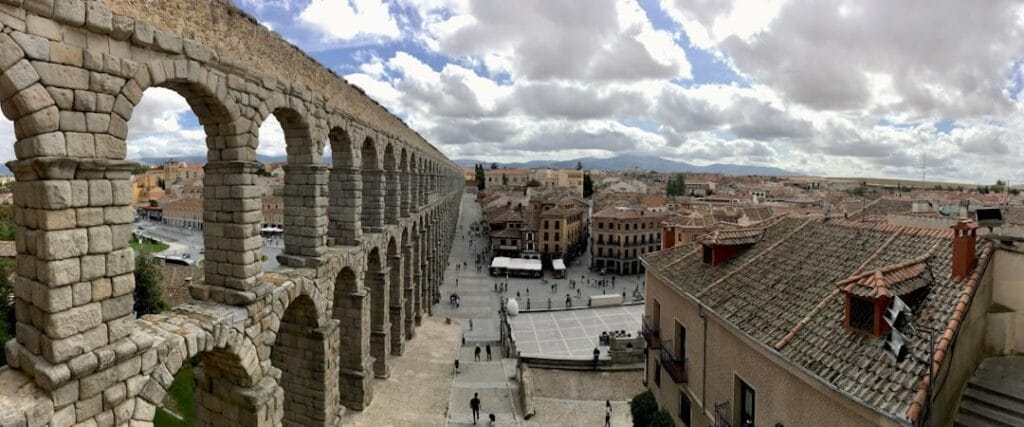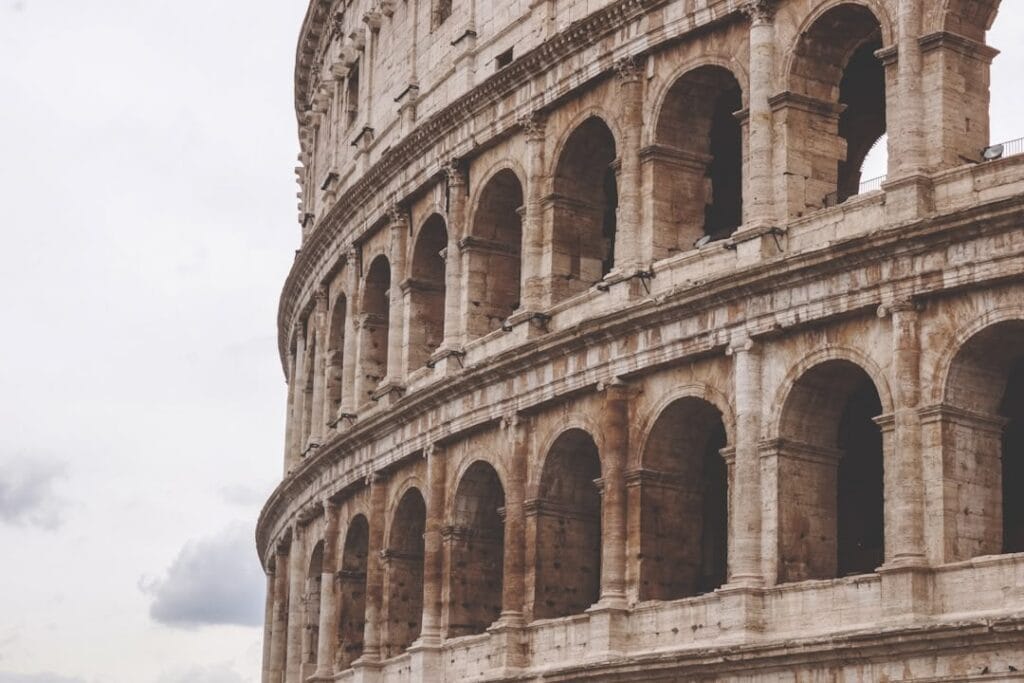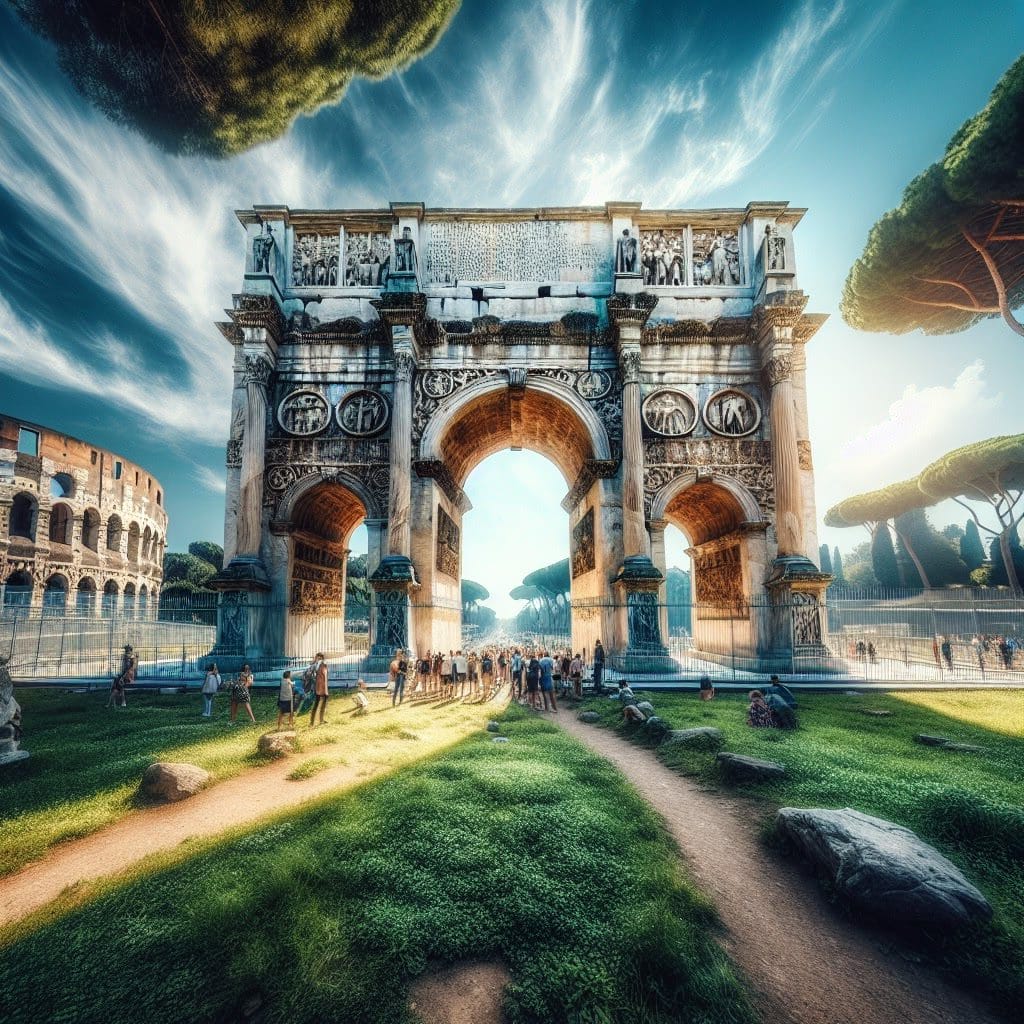An arch is a curved structural member that spans an opening and supports loads from above, characterized by wedge-shaped blocks known as voussoirs. The central block, or keystone, locks the arch in place, ensuring stability. Arches are renowned for their ability to span wide openings and carry substantial loads, making them integral to architectural innovation.
In Roman architecture, arches enabled the construction of grand and complex structures. They facilitated the creation of monumental amphitheaters, aqueducts, and bridges, transforming the Roman landscape and setting architectural precedents. This article delves into the multifaceted role of arches in Roman engineering, exploring their lasting impact on both ancient and modern architectural practices.
Arches in Roman Roads
While the use of arches in Roman roads is not extensively documented, their role in overcoming challenging landscapes is undeniable. Roman engineers faced obstacles like hills and marshy grounds, often integrating arches into bridges and tunnels to maintain the straight paths essential for military and trade efficiency.

These arches contributed significantly to the durability and strength of Roman roads. By distributing weight evenly, they supported the immense loads typical of Roman infrastructure, ensuring longevity and stability. The mastery of Roman engineering principles, evident in their investment in durable road construction, suggests that arches were likely a vital component in strengthening road systems, although the specifics may remain elusive.
Through the application of advanced techniques and materials, including arches, Roman roads withstood the test of time, showcasing an unmatched understanding of engineering. This strategic use of arches not only reflected architectural innovation but also a commitment to creating enduring infrastructure.
Bridges: The Backbone of Roman Infrastructure
The strategic incorporation of arches in Roman bridge construction exemplifies the brilliance of Roman engineering. Arches were crucial in distributing the weight of heavy loads, allowing bridges to span vast distances without compromising stability. By using this architectural form, Roman engineers were able to construct robust and enduring structures that facilitated the movement of troops and goods, underpinning the empire’s expansion.
Notable examples of Roman bridges highlight the ingenuity of this approach. The Pont du Gard in France stands as a testament to such mastery, combining functionality with aesthetic grace. It served as both an aqueduct and a bridge, showcasing the dual utility of Roman arches. Another example is the Pons Fabricius in Rome, which remains the oldest Roman bridge still in use today, underscoring the durability of their engineering techniques.
Romans’ adept use of arches in bridges not only facilitated infrastructure development but also left a lasting legacy on the architectural world, influencing bridge design for centuries.
Aqueducts: Engineering Marvels
The innovative use of arches in Roman aqueduct design stands as a testament to the engineering prowess of the ancient Romans. By incorporating high arches and supporting pillars, these structures were able to maintain a gradual slope, essential for the gravity-driven flow of water over vast distances. This methodology not only provided the necessary structural support but also enabled the construction of extensive water delivery systems.

The impact of Roman aqueducts on urban life was profound. They facilitated the transport of approximately 300 million gallons of fresh water daily into Rome, supporting a thriving population. This reliable water supply was crucial for public amenities such as baths, fountains, and drinking water, significantly enhancing the quality of life in Roman cities. The aqueducts, spanning across territories from modern-day Spain to Turkey, underscore the sophisticated engineering achievements of the Romans, which were instrumental in urban development and sustainability.
The legacy of Roman aqueducts continues to influence modern water distribution systems, demonstrating the enduring impact of Roman architectural mastery.
Arches in Roman Buildings
In Roman architecture, arches played a pivotal role in enhancing the structural integrity of buildings. Their ability to evenly distribute weight allowed for the construction of larger and more durable structures. Unlike traditional masonry, the curved design of arches facilitated the transfer of weight from the center to the supporting pillars, reducing the stress on walls and foundations.

One prominent example of Roman ingenuity is the Pantheon, with its massive dome supported by a series of arches and vaults. This architectural masterpiece demonstrates the capacity of arches to support vast spaces without the need for numerous columns. Another notable structure is the Colosseum, where a complex system of arches creates a robust yet elegant amphitheater.
These examples highlight the Romans’ innovative use of arches, which not only provided practical benefits but also allowed for aesthetic and monumental achievements. The legacy of Roman arches continues to inspire modern architecture, reflecting their timeless appeal and functional excellence.
Symbolic Power of Arches
In Roman architecture, triumphal arches were more than structural feats; they embodied cultural and symbolic significance. These monumental structures served as enduring symbols of military conquest and political power while marking shifts in religious and cultural paradigms. Notably, the Arch of Constantine, erected in 315 AD, stands as a profound example of this duality.

Dedicated to commemorate Constantine’s victory at the Battle of Milvian Bridge, the arch represents the transition from paganism to Christianity, symbolizing the unification of the Roman Empire under a single ruler and the endorsement of a new faith. Its design incorporates spolia, showcasing the continuity and evolution of Roman architectural styles.
Other notable examples include the Arch of Titus and the Arch of Septimius Severus, each celebrating military victories and exerting cultural influence. Through these arches, Rome communicated its dominance, cultural identity, and religious transformations, leaving a legacy that continues to resonate in architectural symbolism today.
Efficiency in Material Usage
The architectural prowess of the Romans is exemplified in their innovative use of arches, which enabled them to construct larger structures using fewer materials. This engineering marvel allowed for the even distribution of weight, reducing the need for massive amounts of stone and other resources. By designing buildings that could span greater distances with less material, the Romans achieved unprecedented architectural feats without compromising structural integrity.
The economic implications of this innovation were significant. By minimizing material use, the Romans could allocate resources more efficiently, which was especially crucial in an empire of such vast expanse. This efficiency not only reduced construction costs but also allowed for the rapid expansion of infrastructure, including roads, bridges, and aqueducts, essential for maintaining the Roman Empire’s connectivity and prosperity. The strategic use of arches thus contributed to the economic vitality of Rome, illustrating how architectural ingenuity can drive broader societal advancement. For instance, the Arch of Constantine serves as a testament to this efficiency, showcasing the ability to create monumental structures that symbolize both power and faith.
Influence on Modern Architecture
The legacy of Roman arches continues to resonate through modern architectural design, imparting both aesthetic appeal and structural efficiency. Roman engineers’ mastery of the arch has become a foundational element in contemporary architecture, enabling the creation of expansive and open spaces that mirror the grandeur of ancient Rome’s structures like the Colosseum. Today, arches serve as vital components in various modern buildings, including civic institutions and places of worship, where they continue to symbolize strength and elegance.
Several contemporary structures exemplify the enduring influence of Roman arches. For instance, the Vault House in California uses vaulted spaces to craft an immersive living environment. Similarly, Tokyo’s coniwa cooperative house employs elliptical arches to create open, light-filled spaces. These examples highlight how the principles of Roman arch design are seamlessly integrated into modern architecture, reaffirming the timelessness of this ancient innovation. The continued use of arches not only honors the engineering feats of the past but also inspires the creative possibilities of the future.
Data and Statistics
The utilization of arches in Roman architecture is a testament to their enduring effectiveness and stability. Statistically, arches were a central feature in a wide array of Roman constructions, from aqueducts to bridges and beyond. One notable example is the Ponte Fabricio, built in 62 BC, which has remarkably survived over 2,073 years. This longevity underscores the durability of Roman arch design.
Roman engineers ingeniously relied on masonry arches to absorb compressive forces, a significant achievement in the absence of modern materials like steel rebar. The analysis of structures such as the Ponte Garibaldi, which spans 120 meters, demonstrates the efficiency of Roman arches in distributing weight. Its span-to-rise ratio of 7.86 highlights the adaptability of arch designs to varied structural demands.
Moreover, the Roman Colosseum, incorporating approximately 200 arches, exemplifies how these structures effectively support massive loads. This data-driven insight into Roman engineering reveals the arch’s critical role in ensuring both architectural stability and aesthetic grandeur, thereby cementing its place as a cornerstone of ancient and modern design.
Summary Table
The application of arches in Roman architecture is a remarkable testament to their versatility and enduring legacy. Below is a table summarizing the key points discussed in this article, highlighting the diverse usage of arches across various Roman structures.
| Structure Type | Arch Usage | Significance |
|---|---|---|
| Roads | Distributed weight evenly | Enhanced durability and strength |
| Bridges | Key structural component | Examples like Ponte Fabricio showcase longevity |
| Aqueducts | Efficient water distribution | Enabled large spans with minimal material |
| Buildings | Support significant loads | Exemplified by the Roman Colosseum |
In comparing the usage of arches, it’s evident that their design allowed Romans to construct massive structures with fewer materials while maintaining stability. For instance, the Ponte Fabricio and the Colosseum demonstrate how arches were integral to creating durable, long-lasting structures. This comparative analysis underscores the Romans’ engineering prowess and their influence on modern architectural practices.
Expert Pull Quote
Renowned historian Dr. Livia Caruso once remarked, “The Roman arch is not just an architectural element; it is a profound testament to the ingenuity and foresight of Roman engineers.” This quote encapsulates the enduring significance of arches in Roman architecture. By mastering the use of arches, Romans were able to construct monumental structures that have withstood the test of time, such as the Colosseum and the Ponte Fabricio. Arches allowed these structures to achieve remarkable stability and strength, showcasing the Romans’ advanced understanding of architectural principles. Their legacy continues to influence modern architecture, underscoring the timeless importance of this innovative design.
Conclusion and Reflection
The architectural mastery of the Romans is epitomized by their innovative use of arches. These structures not only demonstrated remarkable versatility, as seen in roads, bridges, and aqueducts, but also underscored their engineering prowess by withstanding the test of time. Roman arches, characterized by their ability to distribute compressive forces, enabled the construction of monumental structures like the Colosseum and the Ponte Fabricio with limited materials.
Their influence extends far beyond antiquity, as modern architecture continues to draw inspiration from Roman techniques, ensuring the legacy of Roman engineering endures. By merging aesthetic appeal with structural stability, Roman arches have left an indelible mark on the architectural landscape.
FAQ Section
This section addresses common questions about Roman arches, shedding light on their engineering brilliance and enduring legacy.
- What are Roman arches? Roman arches are architectural structures characterized by a curved top that efficiently distributes loads to vertical supports. This design enhances the stability and strength of various constructions, from aqueducts to monumental buildings.
- How did Romans construct arches without modern materials? The Romans utilized masonry arches made from materials like tuff and travertine. They developed a form of concrete that has gained strength over time, allowing arches to effectively absorb compressive forces, even without modern reinforcement technologies like steel rebar.
- Why are arches more efficient than horizontal beams? Arches distribute weight more evenly, minimizing stress on individual components. Unlike horizontal beams, arches use compressive forces to maintain structural integrity, contributing to their ability to support larger spans and heavier loads.
- How have Roman arches influenced modern architecture? The legacy of Roman arches is evident in numerous contemporary structures. Their design principles inspire stability and aesthetics, underscoring their continued relevance in modern architectural practices.

